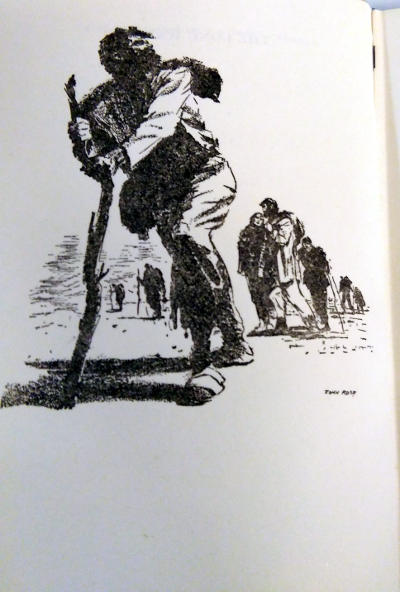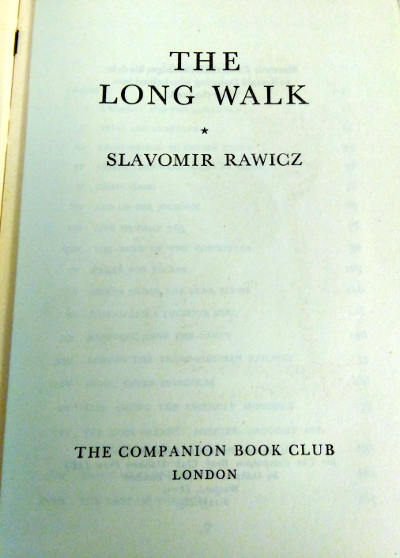About the book (from Wikipedia):
Sławomir Rawicz (1 September 1915 – 5 April 2004) was a Polish Army lieutenant who was imprisoned by the NKVD after the German-Soviet invasion of Poland. In a ghost-written book called The Long Walk, he claimed that in 1941 he and six others had escaped from a Siberian Gulag camp and begun a long journey south on foot (about 6,500 km or 4,000 mi). They travelled through the Gobi Desert, Tibet, and the Himalayas to finally reach British India in the winter of 1942. In 2006 the BBC released a report based on former Soviet records, including statements written by Rawicz himself, showing that Rawicz had been released as part of the 1942 general amnesty of Poles in the USSR and subsequently transported across the Caspian Sea to a refugee camp in Iran, and that his escape to India never occurred.
In May 2009, Witold Gliński, a Polish World War II veteran living in the UK, came forward to claim that the story of Rawicz was true, but was actually an account of what happened to him, not Rawicz. Gliński’s claims have been questioned by various sources.
Rupert Mayne, a British intelligence officer in wartime India, claimed to his son to have interviewed three emaciated men in Calcutta in 1942, who claimed to have escaped from Siberia. According to his son, Mayne always believed their story was the same as that of The Long Walk—but telling the story decades later, his son could not remember their names or any details.
According to the account in the book, Rawicz was transported, alongside thousands of others, to Irkutsk and made to walk to the Gulag Camp 303, which was 650 km south of the Arctic Circle. His labour duties in the camp included the construction of the prisoners’ barracks, the manufacture of skis for the Russian army, and the repair and operation of the camp commandant’s radio.
In The Long Walk, Rawicz describes how he and six companions escaped from the camp in the middle of a blizzard in 1941 and headed south, avoiding towns. The fugitive party included three Polish soldiers, a Latvian landowner, a Lithuanian architect, and an enigmatic US metro engineer called “Mr. Smith”; they were later joined by a 17-year-old Polish girl, Kristina. They journeyed from Siberia to India crossing the Gobi Desert and Himalayas. Four of the group died, two in the Gobi, two in the Himalayas. The book also mentions the spotting of a pair of yeti-like creatures in the Himalayas.
According to the book, four survivors of the 11-month trek reached British India around March 1942 and stumbled upon a Gurkha patrol. They were taken to a hospital in Calcutta. Towards the end of the book, Mr. Smith asked Rawicz about his future. Rawicz told Smith he would rejoin the Polish army. Once released from the hospital, the survivors went their own ways. Some were still permanently sick from the hardships of the Long Walk.




